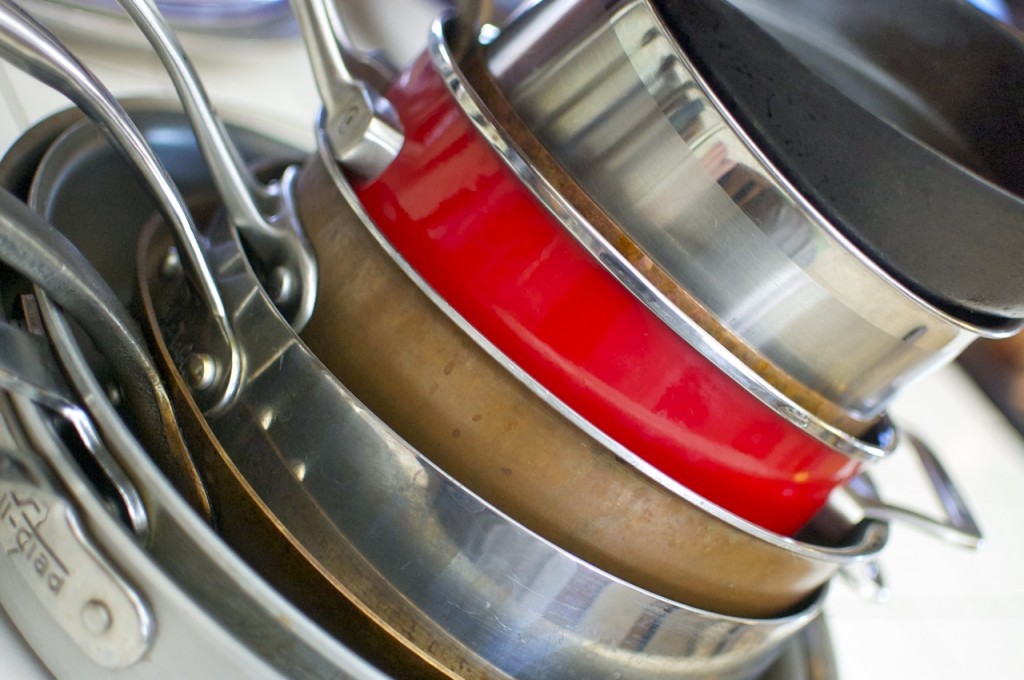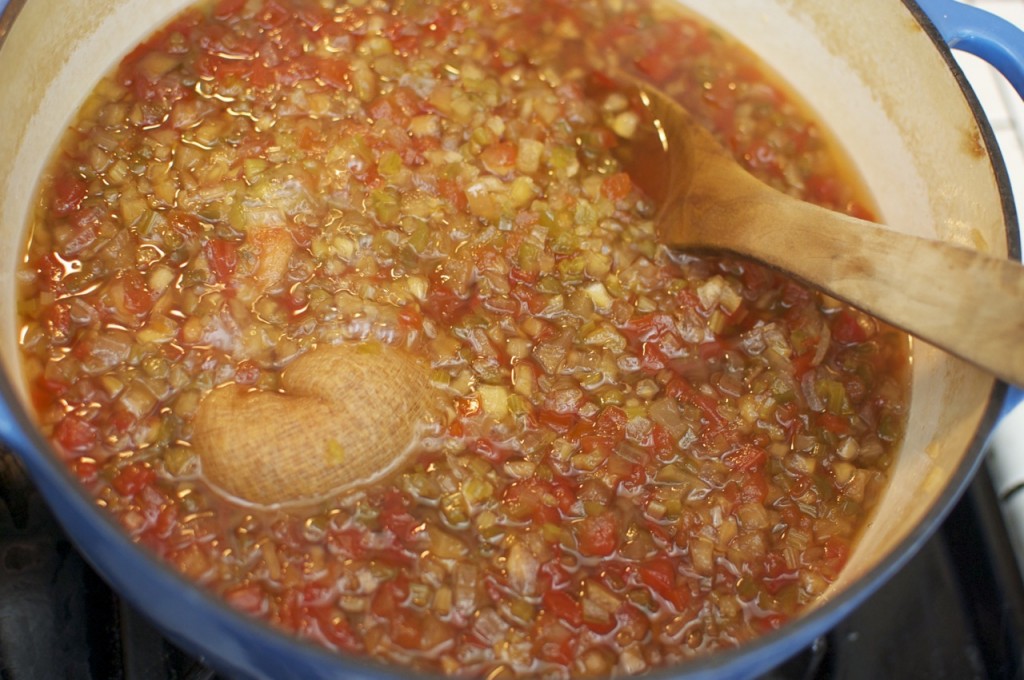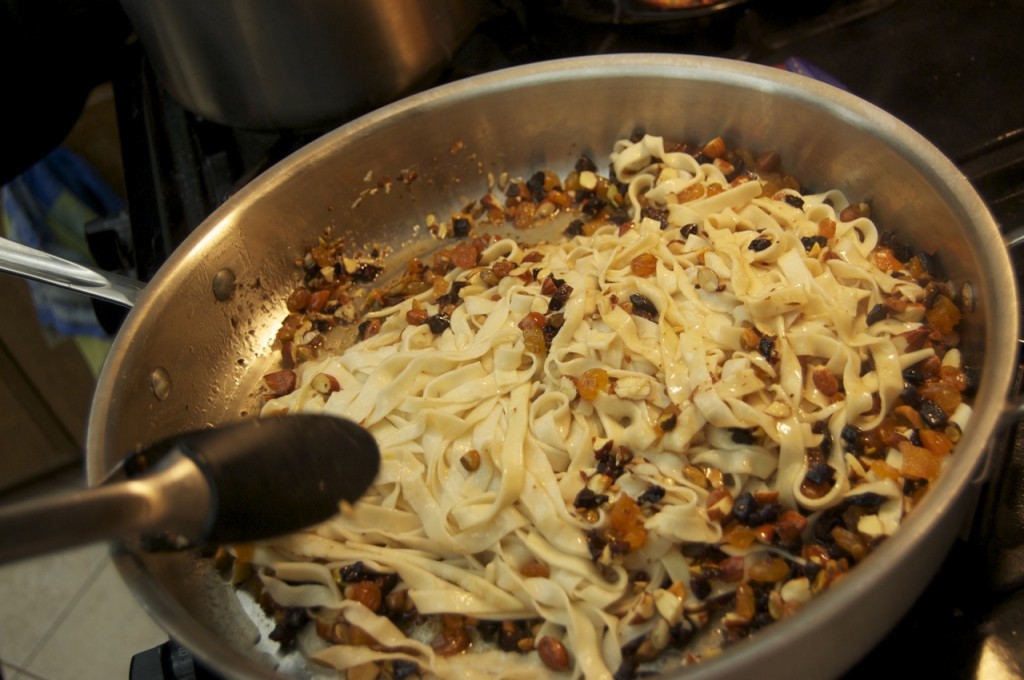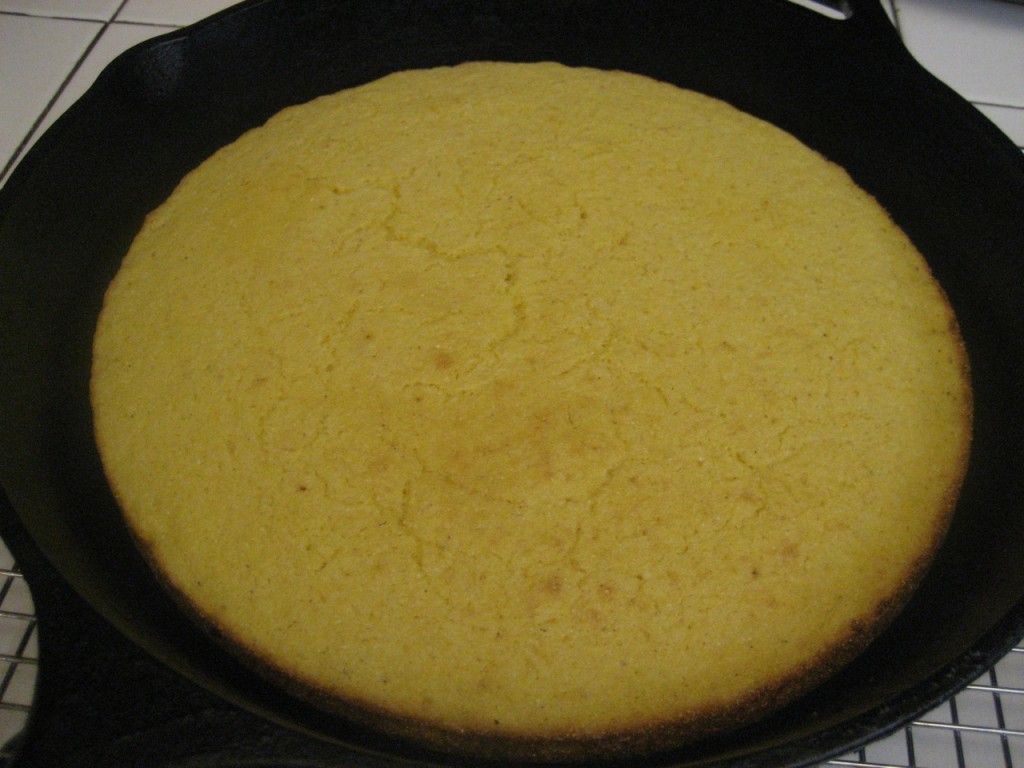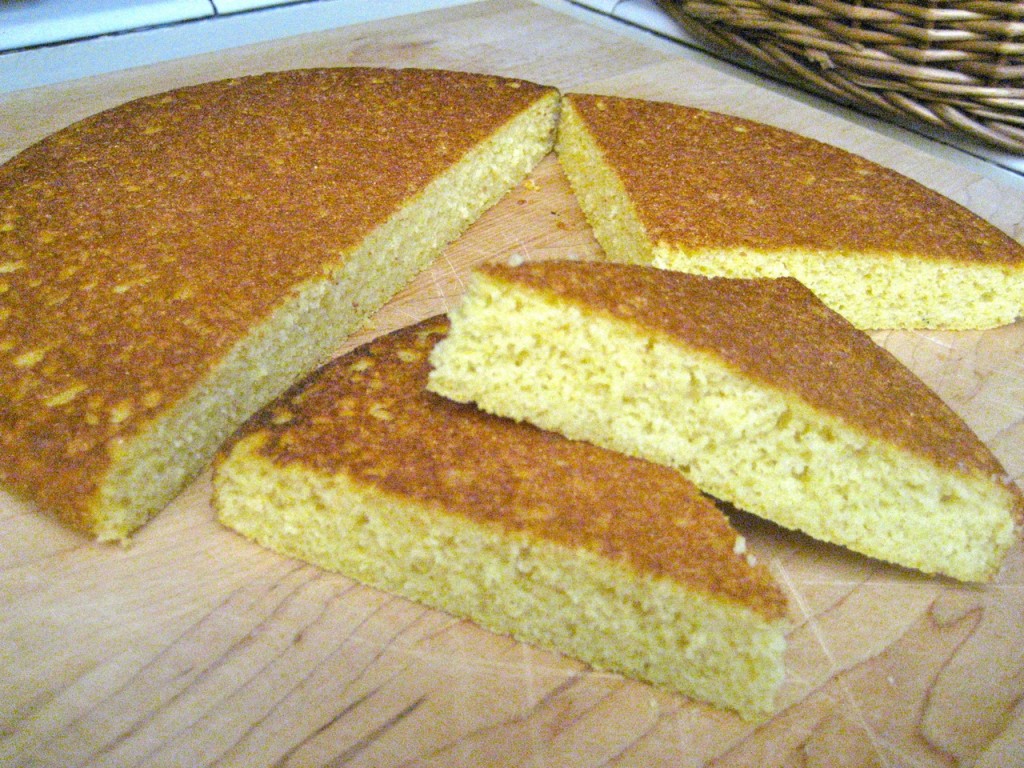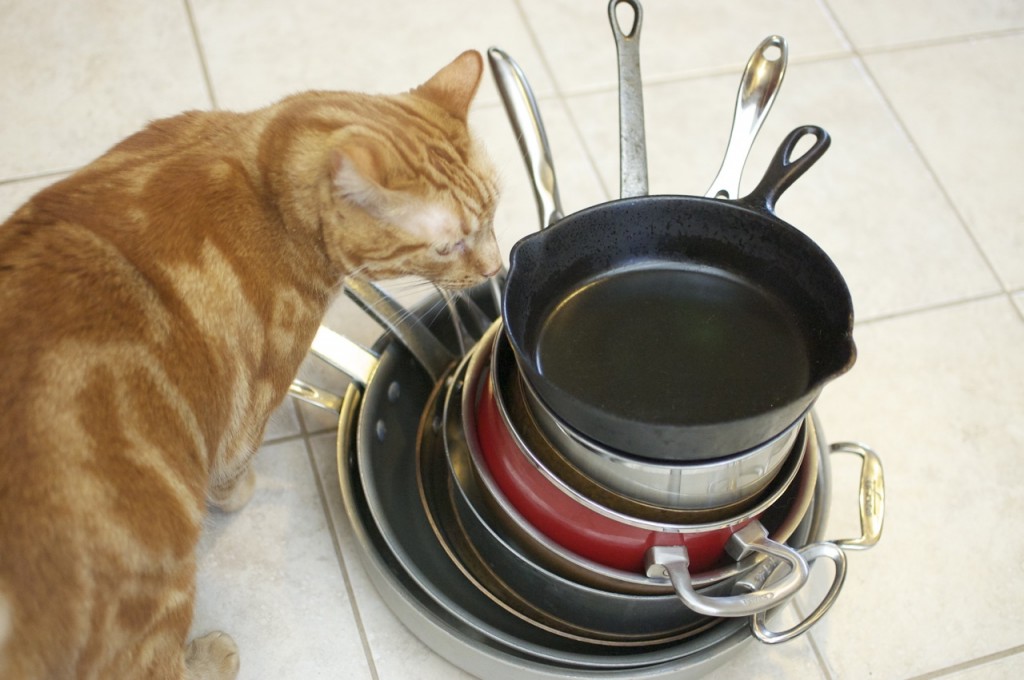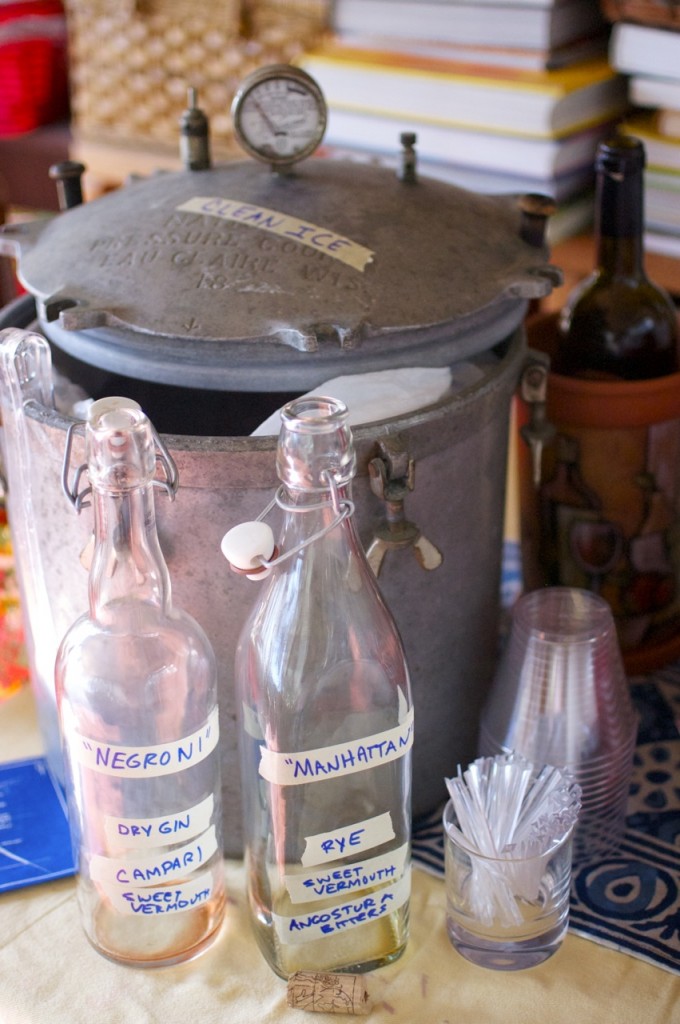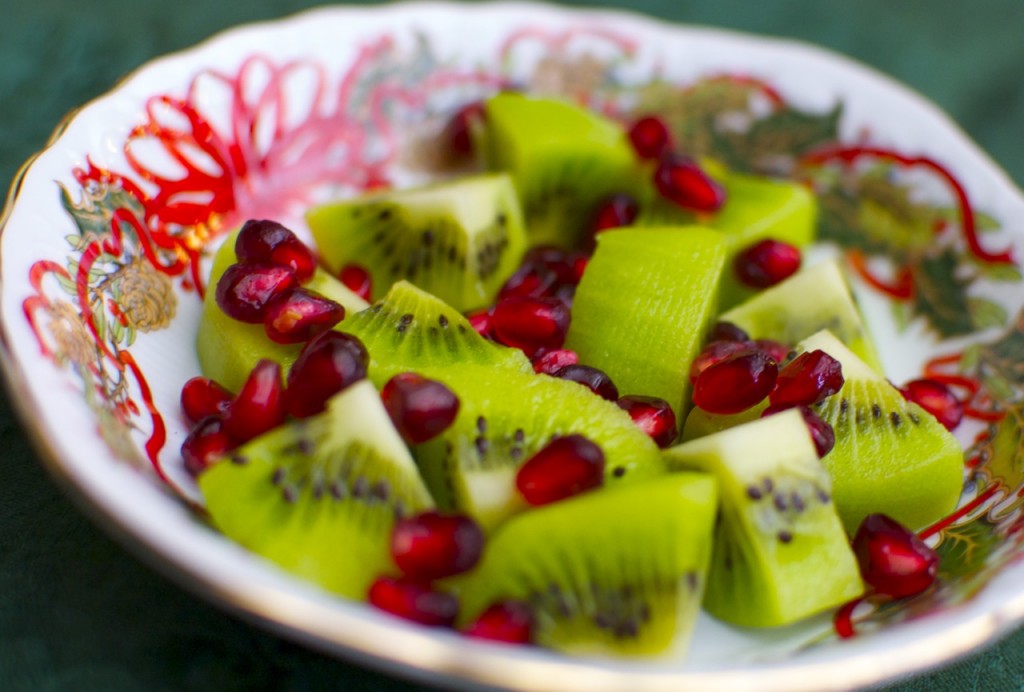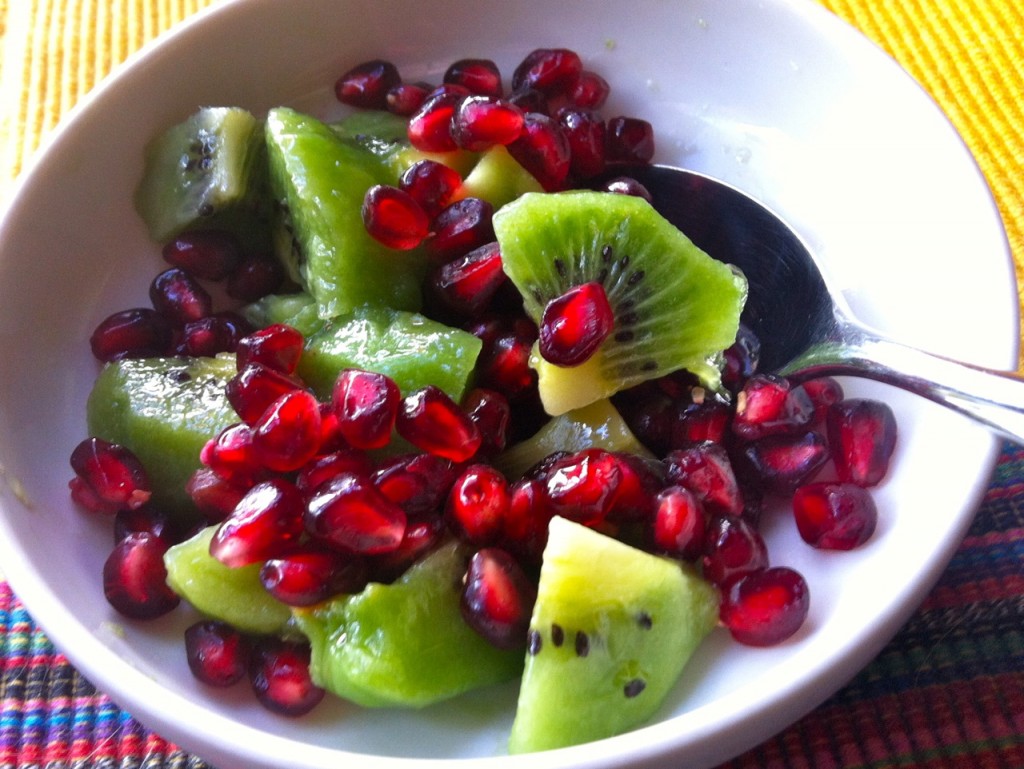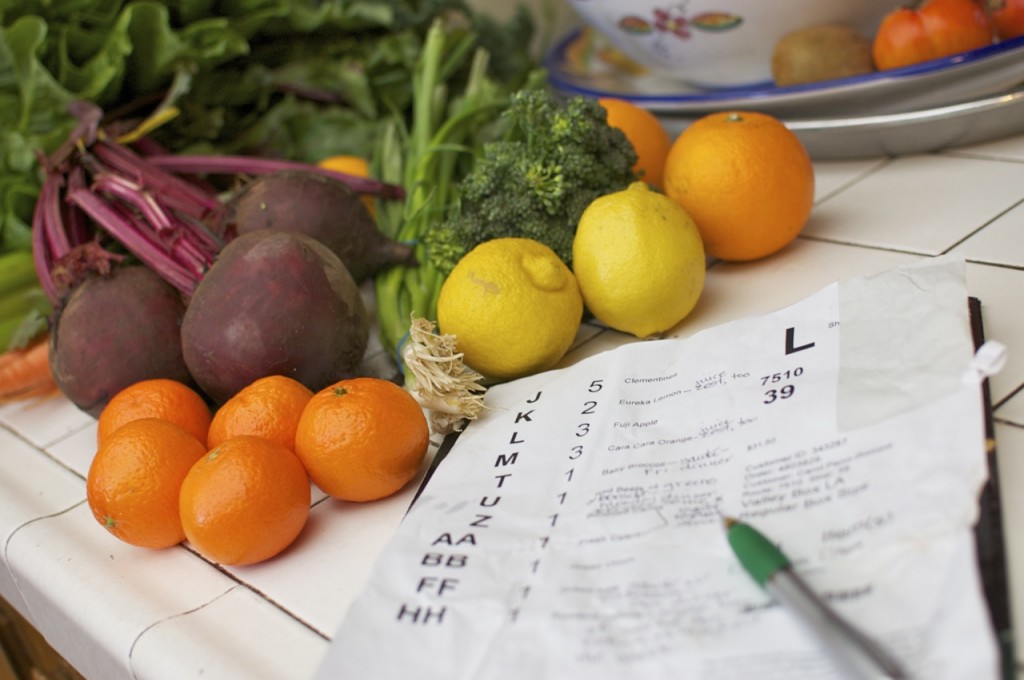
today’s CSA delivery
I have a confession to make: I keep letting things go bad in my vegetable bins.
In the fruits and veggies go, all lush and perky, tucked away into those drawers with all the optimism I have each time I open a new CSA box. But then they sit in there, out of sight, out of mind, while I get busy with other things. And a couple of weeks later I take a peek inside, and what do I see? Bewhiskered onion halves. Carrots you can tie into knots. Kale fatigued to unflattering shades of yellow and brown. Radishes from four deliveries ago that look like sunburnt, shrunken heads. Celery that….oh well, you get the idea.
I absolutely hate wasting food. It’s not just a waste of money. To let food go bad so you have to throw it away, in my opinion, is to spit in the face of every hungry person on this planet. And don’t even get me started on how guilty I feel when I have to chuck out a piece of spoiled meat!
Others make this complaint, too, so I know I’m not alone. We all have methods for trying to prevent waste, including immediately wrapping greens and herbs in moist paper towels to keep them in good shape, and putting fresh fruit in a bowl on the kitchen counter so we’ll notice it when we’re on the way for a cookie. But still I manage to forget what I’ve squirreled away in the bottom of the fridge.
So here’s my new bid to try and stop the waste.
I’m going to take the packing list that’s always in the top of the CSA box and map out how I’ll use each item in the coming week (two weeks for root vegetables), pulling recipes and noting both what I’ll make and when we’ll have it. And I’ll check the calendar as I do this. If it looks like a busy week, I’ll find recipes for things that freeze well.
If I have an abundance of items that will make a great vegetable stock, then I’ll make and freeze some stock–I’m roasting mirepoix even as I write this, and I just snipped some fresh thyme and a bay leaf from the backyard.
Beets are hearty and can last a long time. Usually I’ll roast them whole and serve them sliced over a green salad with goat cheese and toasted walnuts. But in a couple of days I’ll make borscht instead, because it’s definitely hearty soup season. The greens are attached, so those will go into a braise with kale and garbanzo beans on Sunday afternoon. I’ll trim the greens off the carrots this afternoon and feed them to the peckish red worms in my compost box. At this point, those worms are just well-fed pets, but that’s a subject for another blog entry, maybe in the spring…
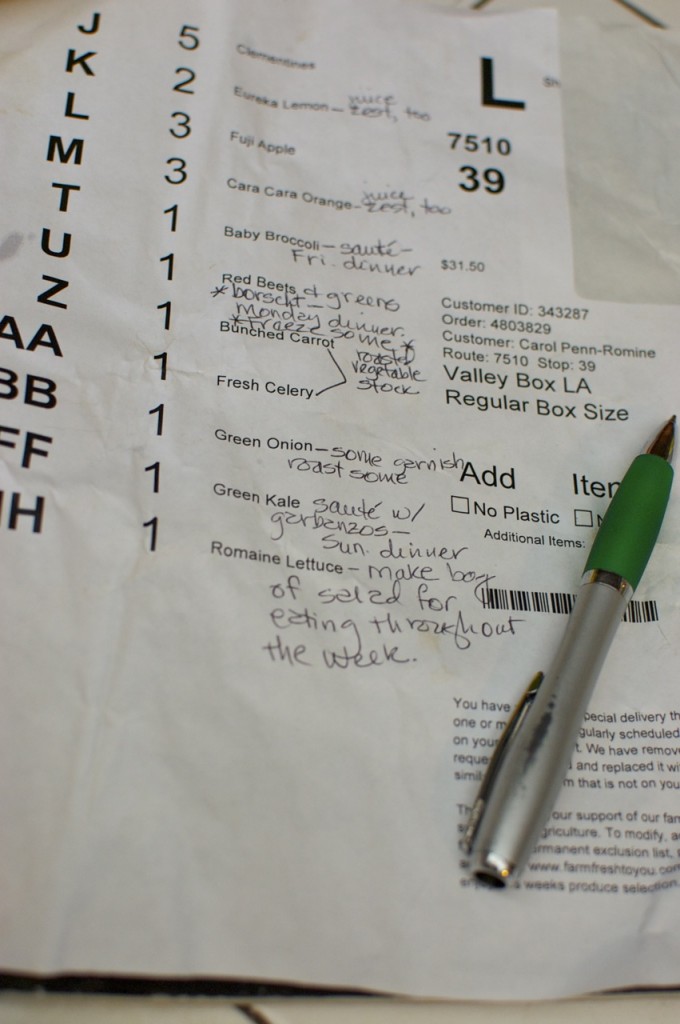
planning out the week’s meals
Usually I toss the packing list into the trash as soon as I’ve pulled everything out of the box. But I’m going to start keeping those lists in a file folder, so I can go back and review my progress and see which dishes we liked enough to repeat. I’ll make notes on the backs of these sheets as I go, so I know what works for us and what doesn’t.
Admittedly, I’m not the best at following through with my resolutions. But next year if I throw out half of what I threw out this year, then that’s progress, right?
I’d like to think so.
Borscht
Borscht is one of those soups that are open to dozens of interpretations. Some include meat and an array of vegetables, so that it seems more like a veggie-beef soup than anything else. To me, borscht is about the beets and the balance of sweet, sour and salt. I like this recipe because it’s simple, very “beet forward” and good either hot or cold. Roast the beets whole and unpeeled, and you get a deep, rich flavor. Dice or grate them (wear red or black while you’re doing this!) and simmer them, and you’ll get a lighter flavor that’s especially refreshing in a cold summer soup. My version is a take on Mimi Sheraton’s cold borscht recipe from From My Mother’s Kitchen.
This recipe makes 4-6 servings.
3 or 4 medium-sized beets
5 cups of water
juice of 1 to 1 1/2 lemons
4 egg yolks
salt, sugar and white pepper to taste
sour cream & fresh dill for garnish (other garnishes can include cooked tiny whole potatoes)
Wash and peel the beets, then cut into small dice or coarsely grate. Combine in a large pot with water, the juice of half a lemon, and a pinch of salt. Bring to a boil, then reduce to a simmer, cover, and cook until tender, about 35-40 minutes. Add the juice of another half a lemon, stir well, and remove from the heat.
Beat egg yolks in a medium bowl with a whisk or fork. Slowly ladle in some of the beet liquid, whisking constantly, to gradually bring up the temperature of the yolks without cooking them. After you’ve whisked in about four ladles, pour the mixture very slowly back into the pot, whisking constantly to blend. (You won’t really taste the eggs in the finished product–they’re more about producing a rich, velvety texture.)
Now–here’s the fun part–pour the pot of soup into a large bowl or pitcher; then pour it back into the pot. Pour it back and forth between the pot and the bowl or pitcher about 10 to 15 times. About halfway through, stop and taste the borscht. Season with salt and white pepper, and adjust the flavor with more lemon juice and a bit of sugar if you want. Then finish the back-and-forth pour. All of this pouring will give the borscht a smooth, creamy texture.
At this point you can either chill it thoroughly and serve it cold or heat it a bit–just don’t recook it. Whether you’re serving it hot or cold, garnish with a dollop of sour cream and a snipping of fresh dill.
(You can make this with canned beets, but it won’t have the full flavor you get from fresh beets. You can also whisk in two large, whole eggs, rather than just yolks, but if you do, be sure your whisking arm is up for the challenge. Unless you’re dedicated to a vigorous whisking session, the result will be a funky looking crimson egg-drop soup!)

